Posts Tagged: chrysalis
It's Chrysalis Time in the City
Our unseasonably warm temperatures in November yielded 12 unexpected surprises: 12 monarch caterpillars munching away on the tropical...
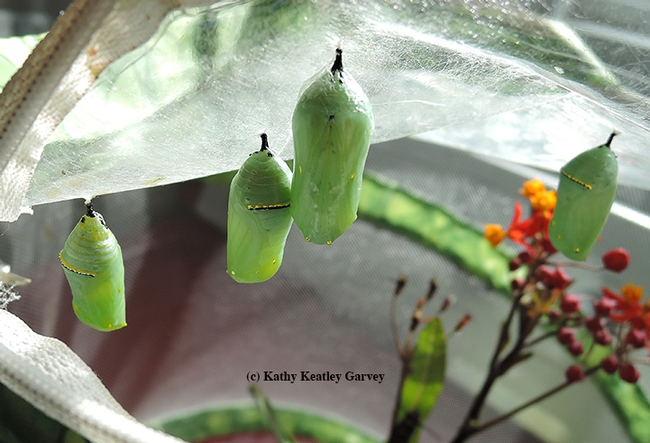
It's chrysalis time in the city. (Photo by Kathy Keatley Garvey)
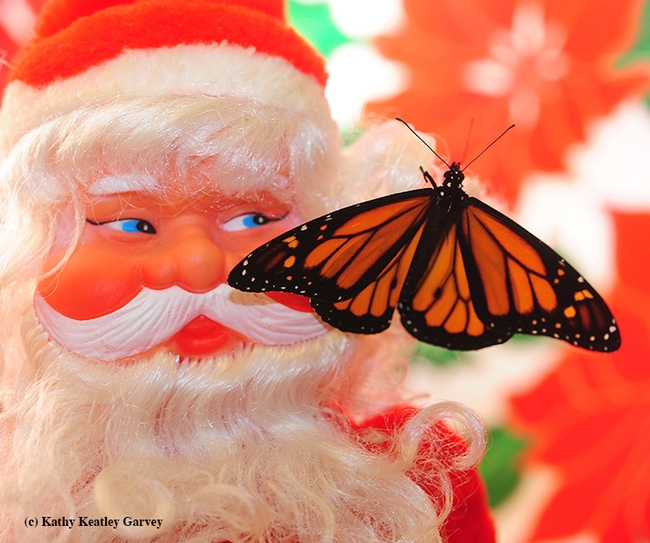
Santa appears to be looking at the newly eclosed male monarch. (Photo by Kathy Keatley Garvey)
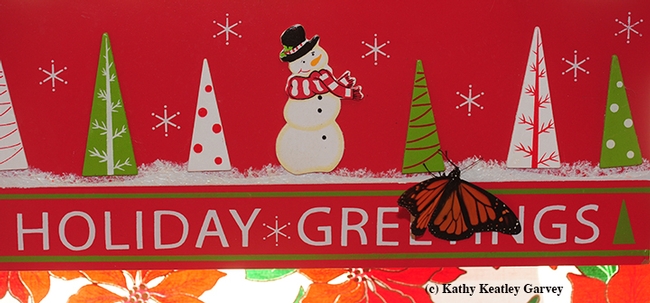
Happy holidays from an out-of-season monarch. (Photo by Kathy Keatley Garvey)
The Making of a Monarch
If you're addicted to monarchs--and lament that they're overwintering in coastal California and in central Mexico and nowhere near you--no...
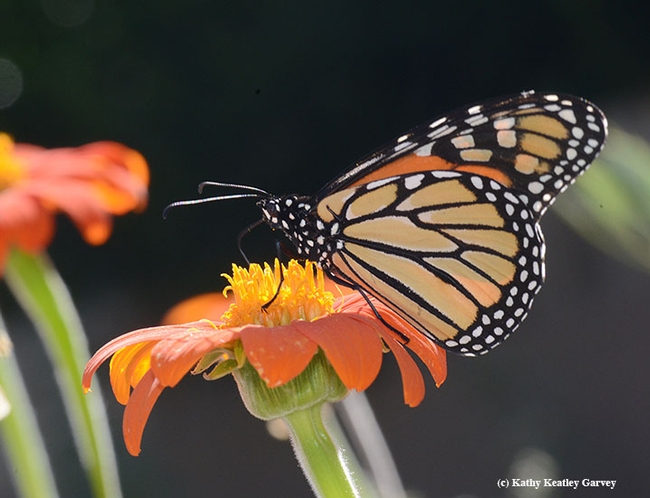
A monarch butterfly on a Mexican sunflower (Tithonia). Monarch puppets are available at the Bohart Museum of Entomology. (Photo by Kathy Keatley Garvey)
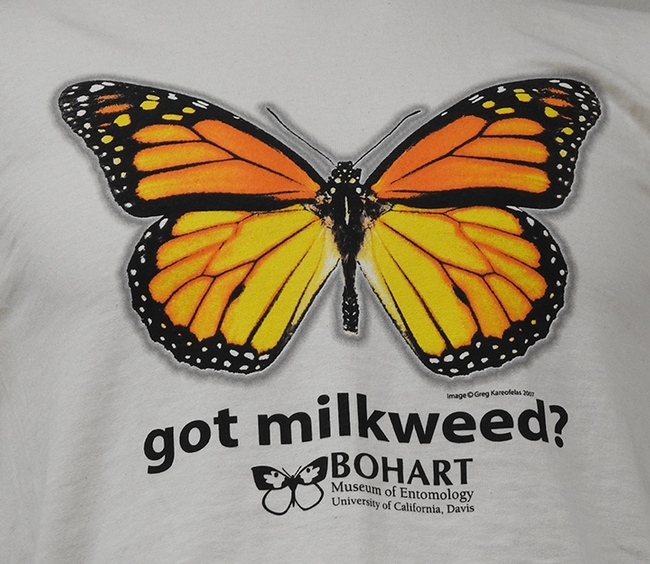
Monarch t-shirts at the Bohart Museum of Entomology ask the question: "Got milkweed?" Milkweed is the host plant of monarchs; monarchs lay their eggs only on milkweed and caterpillars eat only milkweed. (Photo by Kathy Keatley Garvey)
They Didn't Get the Memo
They didn't get the memo. Summer is over. Fall is underway. Winter is coming (Dec. 21). But the Gulf Fritillaries (Agraulis vanillae) are still...
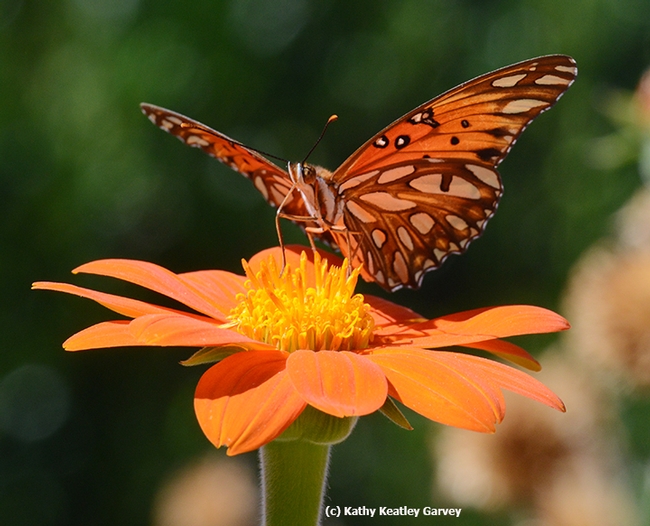
Gulf Fritillaries are still flying--and mating and laying eggs--in November. This one is nectaring on Mexican sunflower (Tithonia). (Photo by Kathy Keatley Garvey)
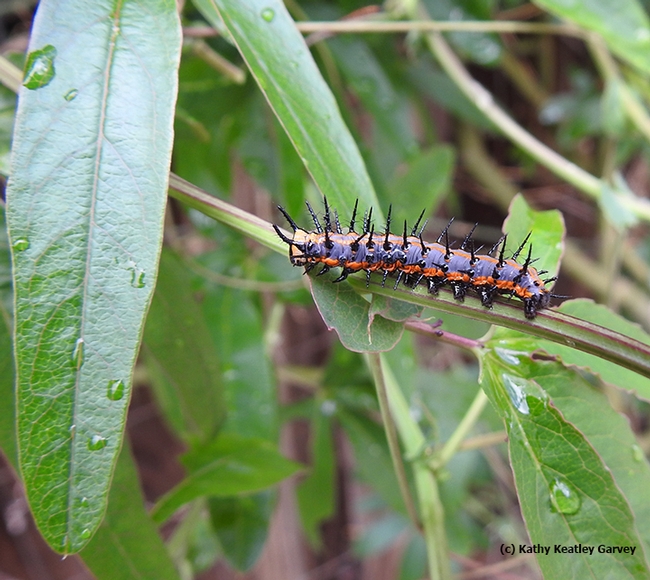
A Gulf Fritillary caterpillar in November. (Photo by Kathy Keatley Garvey)
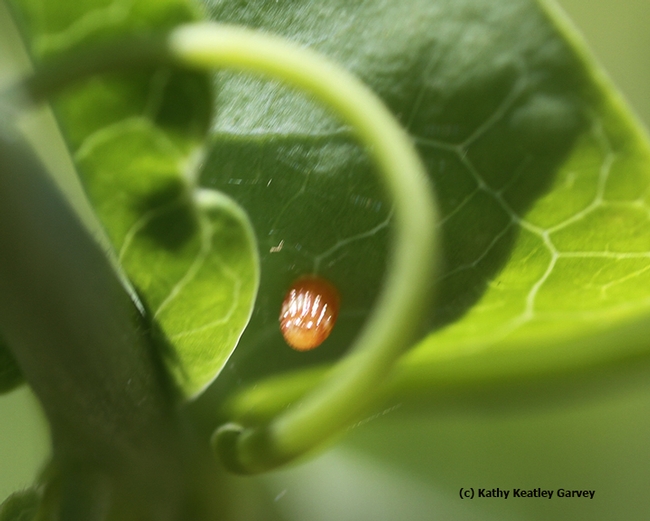
A tiny Gulf Fritillary egg. The egg is about the size of a sesame seed. (Photo by Kathy Keatley Garvey)
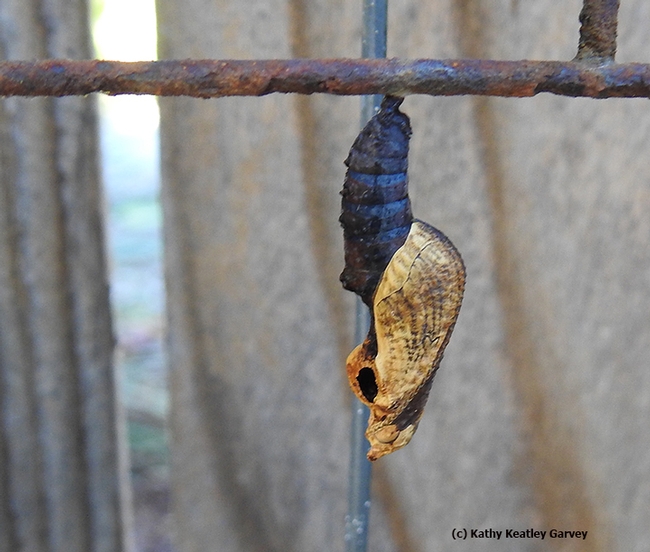
No Gulf Fritillary will ever eclose from this chrysalis. Note the parasitoid hole. It was a large parasitoid--a big tachinid fly or an ichneumonid or wasp--says Art Shapiro, UC Davis distinguished professor of evolution and ecology. (Photo by Kathy Keatley Garvey)
It Happens: Nature Isn't Perfect
If you engage in a mini-monarch conservation project, you know the joy of watching the egg-caterpillar-chrysalis-adult transformation. It's one of...
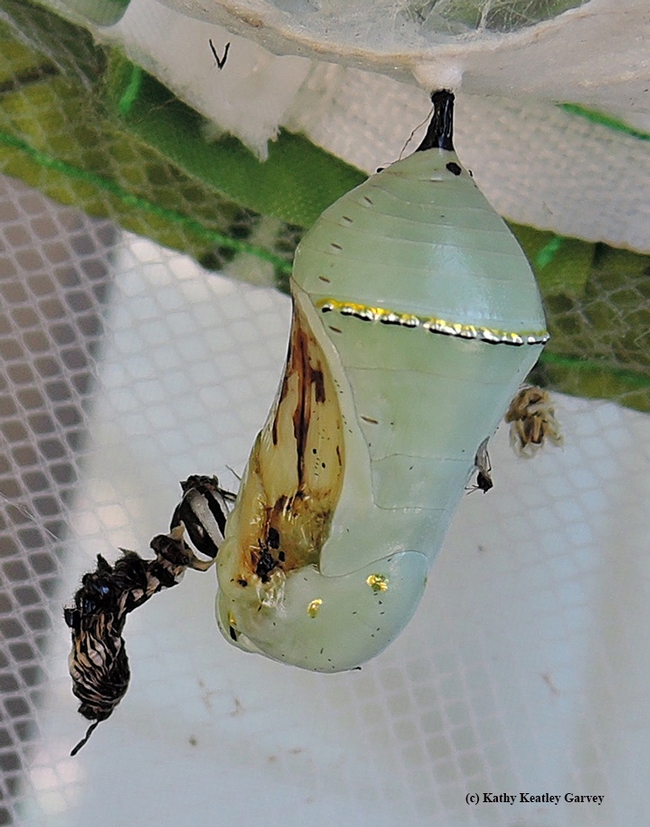
A monarch chrysalis, cannibalized by a hungry caterpillar. (Photo by Kathy Keatley Garvey)
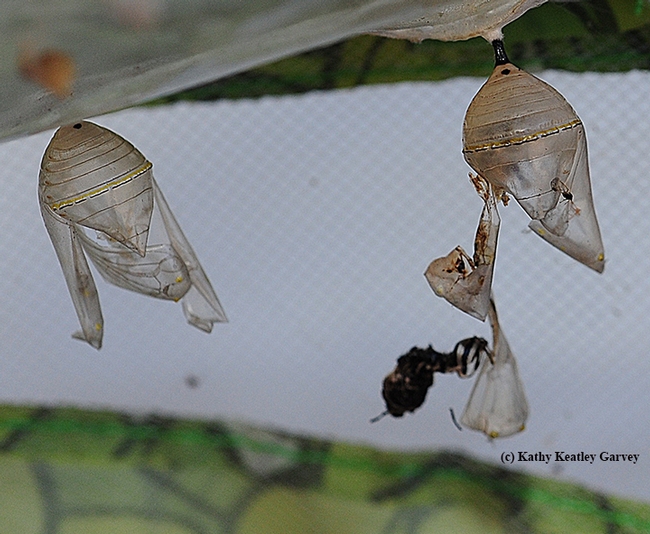
From a chrysalis to a pupal case--now where's the monarch? (Photo by Kathy Keatley Garvey)
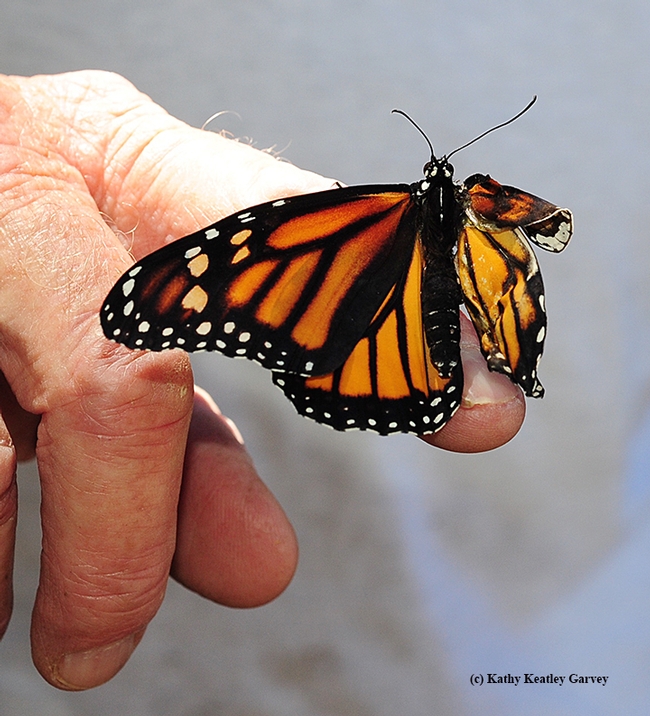
It's a girl, but she has a deformed wing.(Photo by Kathy Keatley Garvey)
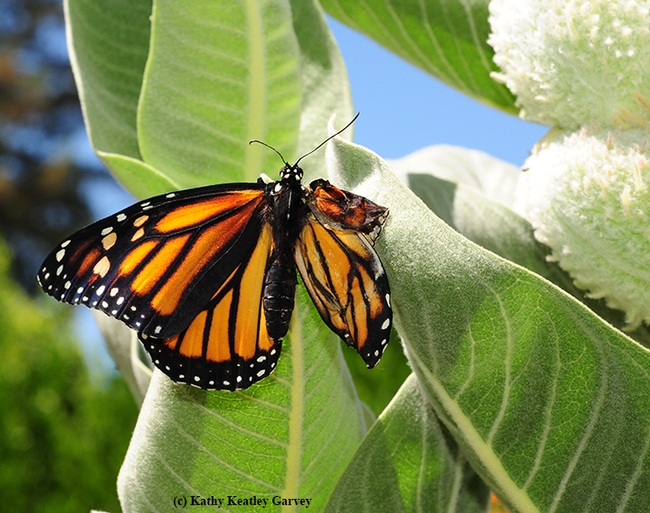
Newly eclosed, but deformed, monarch clings to a milkweed, Asclepias speciosa. (Photo by Kathy Keatley Garvey)
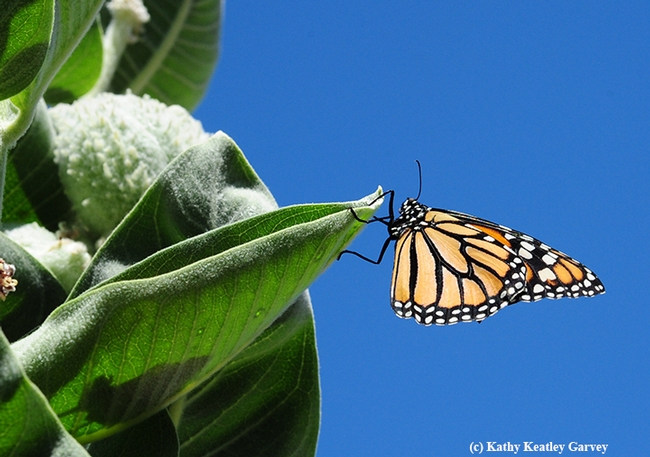
Perfect from this angle! This is her best side, truly. (Photo by Kathy Keatley Garvey)
Miracles Do Happen
For the last several months, we've seen monarchs laying eggs on our narrow-leafed milkweed. A daily check yielded "zero" caterpillars. Zero. Nada....
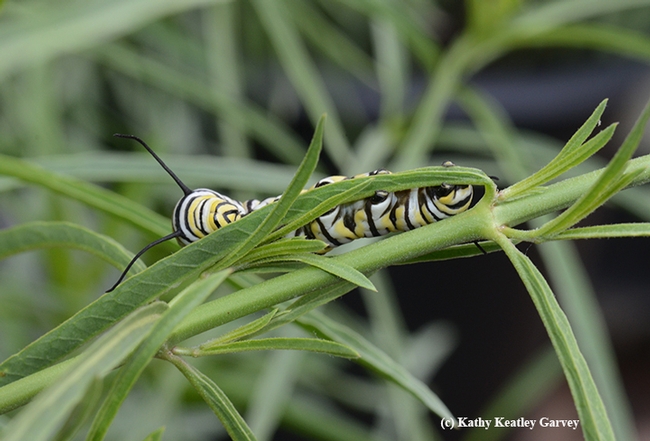
A fifth instar caterpillar partially hidden in the narrow-leafed milkweed. (Photo by Kathy Keatley Garvey)
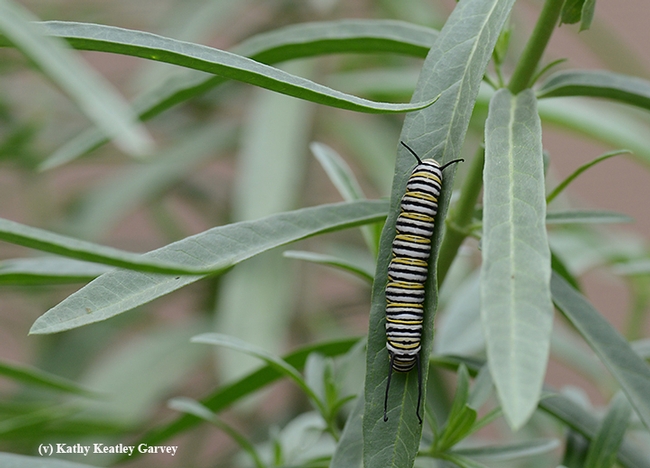
Hidden, but there it is! (Photo by Kathy Keatley Garvey)
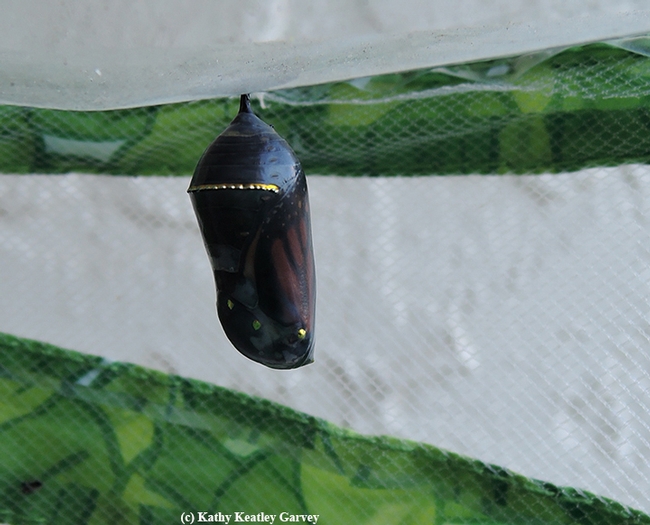
The chrysalis turned from jade green to transucent. You can see the butterfly inside, almost ready to eclose. (Photo by Kathy Keatley Garvey)
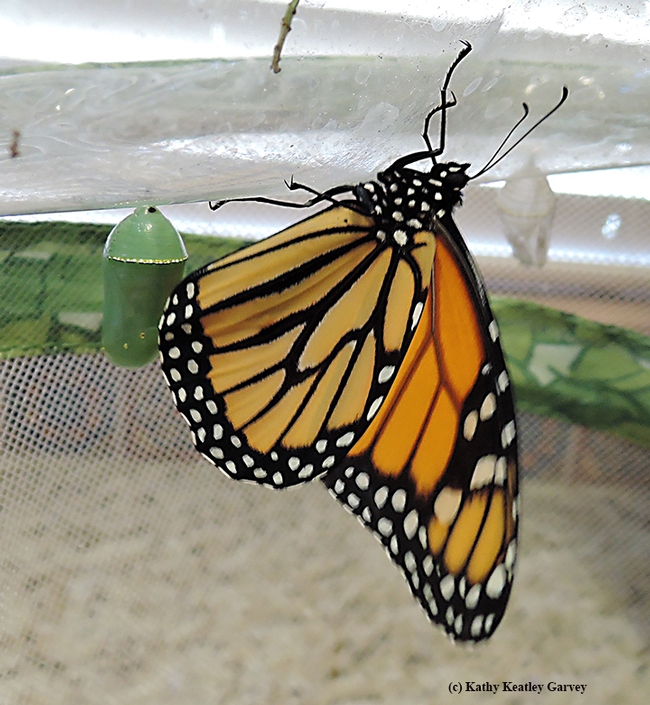
The newly emerged male monarch dries its wings. At left is the second chrysalis, which turned out to be a female. (Photo by Kathy Keatley Garvey)
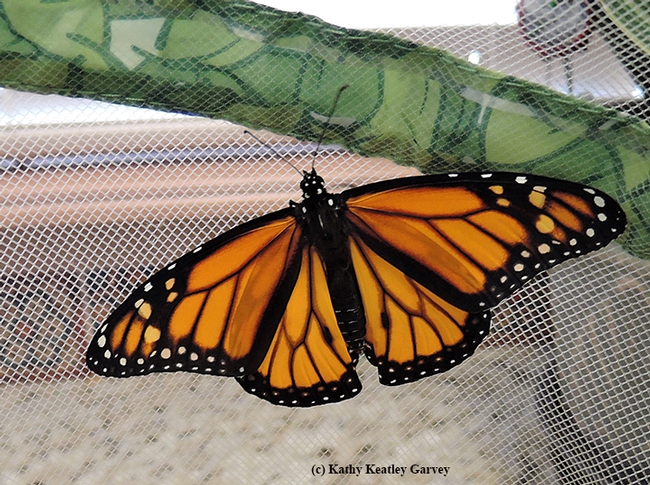
The first male monarch of the season, ready to be released. (Photo by Kathy Keatley Garvey)

